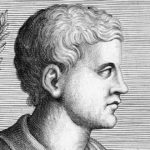Author N.T.WRIGHT
Publisher SPCK
ISBN 0-281-04717-0
It is about fifteen years ago (this book brief is dated 2011) that this particular book was published and at that time its author was not as well known, nor as controversial, at least in the assessments of some theologians and pastors, as he is today. Wright is an Anglican clergyman, a brilliant scholar, historian and theologian and most certainly a pastoral lover of the Lord Jesus. This particular book brings together all these aspects of what its author really is. It is scholarly and therefore, for some, will be engaging with matters that are not relevant, but for those familiar with theological discussion these aspects will be helpful.
The book glorifies the Lord Jesus as its author endeavors to unfold the self-understanding that He (Jesus) had as He fulfilled His ministry on this earth. It is within the historical period of second temple Judaism that Jesus is considered; He lived His life and died within a historical milieu when the leaders of the Jewish nation had espoused what Wright calls ‘the satan’ as regards their vocation as a nation, they were gravely mistaken in their view of things. It is greatly refreshing to be faced with persuasive argumentation showing how much Jesus was the Person of His day and speaking, firstly, always to the people of His day. We, in the church have tended to read back into what He did and what He said, the understandings of the meaning of His death and resurrection that emerged in the first century and have therefore missed fundamental aspects vital to a fuller grasp of Who Jesus is, Who He knew Himself to be as He walked among men and what He had come to accomplish. He is the True Temple, the fulfillment of all things, His coming to the temple and the cross was in fact the coming of God to the earth to destroy the enemies and to establish His kingdom.
This book takes a wonderfully wide sweep of the gospels; it sets Christ in the context of the Old Testament history and the corrupted expectation of that form of Judaism that had emerged by the time of His life on earth. Some will find Wright’s reasoning stating that the Jews still regarded themselves as under exile whilst living in their homeland questionable and will also take exception to his interpretation that the many scriptures referring to the Son of Man and His coming refer not, as generally thought, to what has become known as His second coming, but to His coming to Jerusalem and His death on the cross.
Jesus was a revolutionary, but of what kind? What place did His cryptic sayings and parables have in stating that revolution? These and other questions are answered in an illuminating way in these chapters. There is an immense field of study here and every reader will benefit from a steady walk through these pages.




